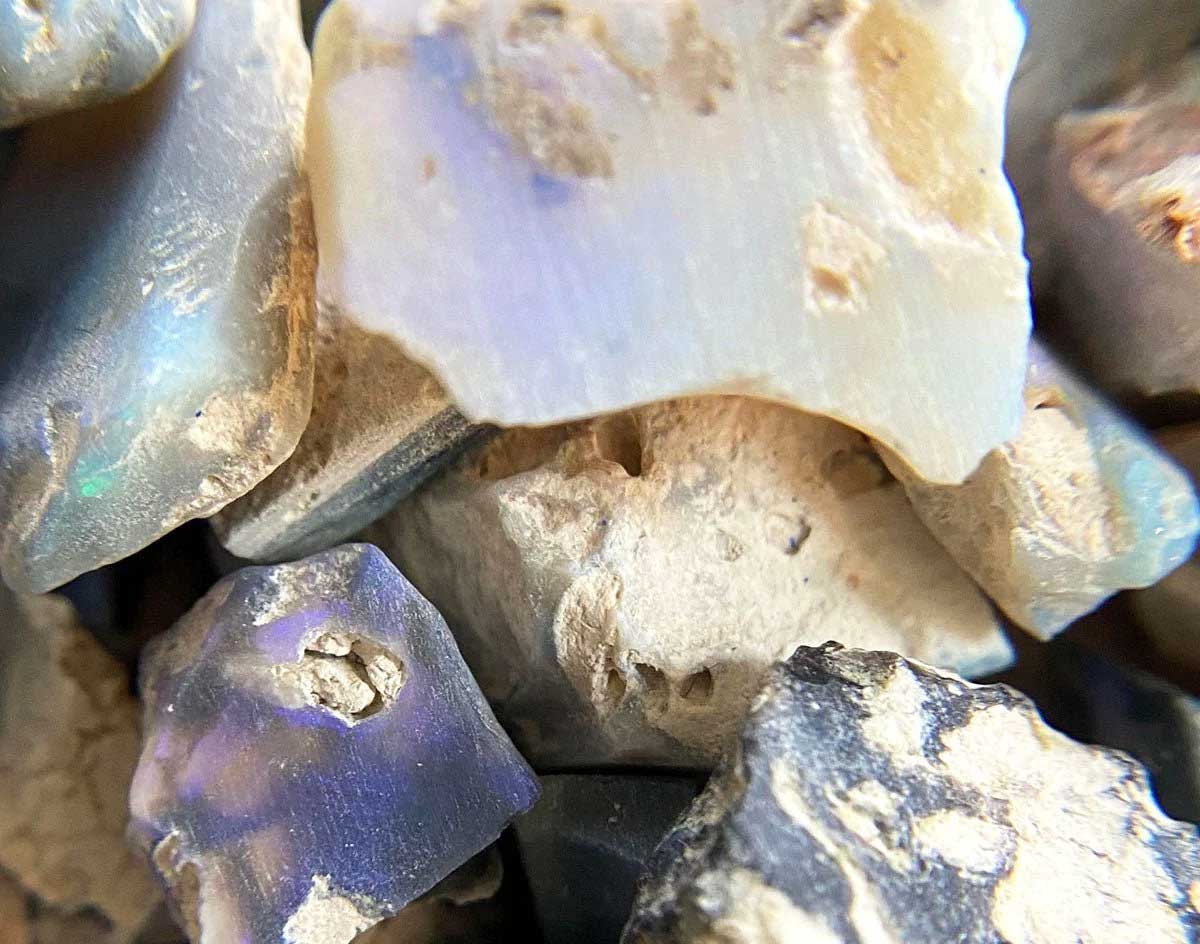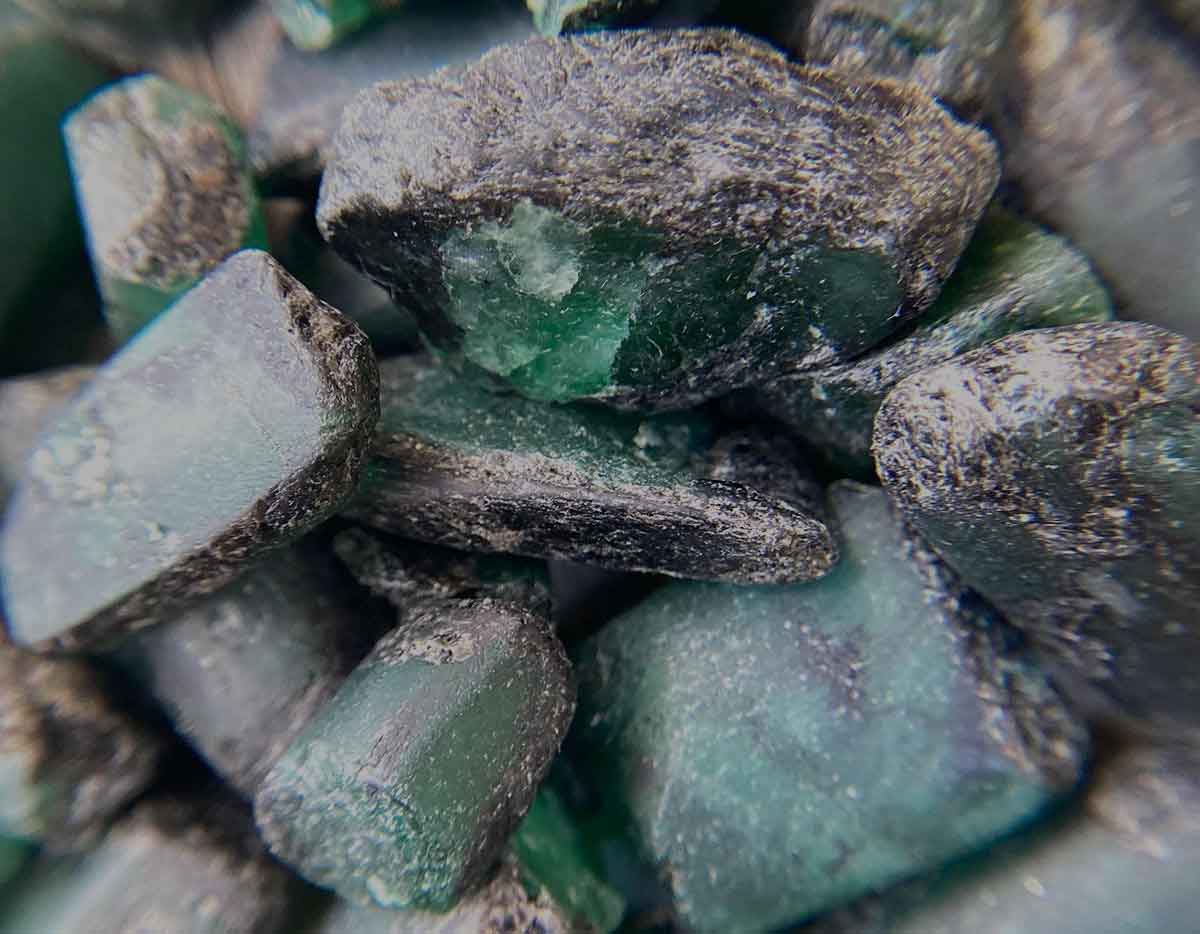Opal is one of the best-known and most highly sought-after gemstones and has remained popular throughout human history
The multi-colored rainbow-like patterns evoke images of a dazzling firework display or a vibrant starry night sky. Silica deposited by floods and rains soaking downwards through the land, layer after layer, creating these uniquely patterned works of art, which have been captivating the human imagination for millennia
Etymology of Opal
The name ‘opal’ came to us in English first through the Sanskrit ‘upala’ meaning 'precious stone’. The Greek derivative ‘opállios’ then became Latin: “opalus”, which is where we get our word today. The Roman writer Pliny wrote fondly about ‘opali’, saying: “Some opali carry such a play within them that they equal the deepest and richest colors of painters. Others…simulate the flaming fire of burning sulphur and even the bright blaze of burning oil”
Varieties of Opal
Opals come in many shapes, sizes, and varieties and can be located in many different parts of the world from North Africa to Australia. Opal colors vary from white, red, green, yellow, pink, blue, brown, black, and even colorless. Due to the internal structure of opal diffracting light (Play-of-color), there can be almost endless variations from stone to stone and almost every light visible to the human eye can be observed within the stones.

Precious Opal
Precious Opal might be the rarest of all the opal gemstones. The absorbent and reflective composition of silica spheres within the stone bounce and reflect light, creating an effect known as opalescence (the aforementioned 'play-of-color'), which gives precious opal its' unique charm and mystique.
The opal stone dazzles brilliantly against different colored backgrounds and was widely believed to have metaphysical properties by our ancestors, who were just as awe-struck by this as modern day gem enthusiasts but without the complex scientific explanation to explain it. Precious opal's value is determined by its' size, shape and the quality of the light it reflects. Precious opal is only able to be mined in a few locations worldwide, its' rarity and beauty adds to its desirability.
Common Opal
Common opal is, as the name implies, a more commonly mined variety of opal. It's composition is not made up of orderly silica spheres, as is the case with Precious Opal and therefore does not display the same levels of opalescence or play-of-color. Nevertheless, common opals are a beauty to behold.
They come in a range of colors, such as green, orange, red and blue. Common Opals are known for their translucence. Very often common opal will contain inclusions called 'dendritic inclusions', which can appear like a forest or a tree trapped within the gemstone. Common opal often has a milky luster.
Mexican Fire Opal
Mexican Fire opals have the appearance of a burning flame and are found in several regions in Mexico, such as Guerrero, Chihuahua, Julisio and Queretaro. The mines in Queretaro has been in operation since the 1830s but even before then, Mexican fire opals were mined and admired by the Aztecs and almost certainly by their predecessors, the Olmec people.
Mexico has many volcanic regions and it is amongst these areas that Mexican fire opal will be found. Magma is very rich in silica and it is from these deposits that Mexican fire opal will be located. Mexican fire opals are usually boulder opals, meaning they can be mined as part of larger rocks that contain small seams of the opal within the larger rock.
Australian Opal
Australia's national gemstone is the opal, with Australian opal mining going on there since the 1880s when a man by the name of Tullie Cornwaithe Wollaston took some pieces of Australian opal from Queensland to London. After some initial failures, the opals were eventually bought by a mining firm and slowly but surely, Australia's love affair with opal began to blossom!

The majority of the world's opal, around 95% is believed to come from Australia. Opal is mined in a vast region spanning 1.7million square kilometers known as The Great Artesian Basin. This region which is underlying parts of the Northern Territory, New South Wales, Queensland and South Australia, is exceptionally rich in silica and 140 million years was a massive inland sea when areas dried up, vast silica deposits gathered in holes within the rocks. Due to the erosion and weathering over periods of 30-40 million of years, opal began to form in those crevices. The Great Artesian Basin as an exceptionally large area, but there are a few notable mining towns such as Coober Pedy in Southern Australia.

This is the town where the largest and most valuable gem opal "Olympic Australis" was mined back in 1956. This impressive specimen weighs 17,000 Carats (3.4kg /7.5 lbs) and is 11 inches (250mm) in length. Mintabie Mining field and Lightning Ridge are also quite well-known, producing some of the best Black opal in the world. Australia also contains opalized fossils (including some dinosaur bones) in South Australia and New South Wales.
Australian Exceptional Opal
Similar to other Australian opal gems, except these gems do not contain any inclusions, but retain that fire-like appearance throughout. Almost all of our opals come from the Lightening Ridge area of Australia known for its high-quality gems and make for some dazzling earrings, rings and/or cuffs.

Peruvian Opal
Opal is also found in Peru and is their national gemstone. Peruvian opals are reminiscent of a tropical beach in their appearance, evoking the imagery of pristine, clear blue waters and skies. These gems are formed at low temperatures from igneous rocks with a high silica concentration.
Peruvian opals do not have the uniform orderly silica structure of precious opal, so they do not contain the play-of-color property, though they still retain iridescence, and depending on the particular cut, can contain unique inclusions.
These gemstones are a light blue in color and are mined in an area called San Patricio near the Andes mountain range. Due to their increased popularity in recent years, some scammers have been caught dyeing fakes to try mimic the ultramarine hues. We only source our gems from reputable and ethical sources and do not need to use fakes, the quality speaks for itself!
History of Opal
It is believed that as far back as 4000 BCE, tools made from North African opal were in use. As far as its use as jewelry and adornment, opal was very difficult to obtain and therefore incredibly rare and valuable. It was highly admired by several ancient cultures and has been written about by Greek, Roman, Arabic scholars, who seemed to share an idea that the magnificent gems brimming with kaleidoscopic colors were a gift from the gods or that they contained the power of lightning within.
As time progressed, the Medieval European writers began to record a superstitious belief that these gems were bad luck and would bring misfortune to the wearer. They even got the blame for the Black Death as the population struggled with the pestilence and suffering in an era devoid of the scientific advancements we take for granted today. Sir Walter Scott's novel, Anne of Geierstein was published in 1829, and *SPOILER ALERT* the Baroness has an opal talisman with supernatural powers but she dies soon after after a drop of Holy Water hits the talisman. The popularity of the book effected the sale of opal dropping by 50% and remained low for the following 20 years.

You can't keep a good thing down forever, and opal's popularity bounced back particularly during the Victorian era. The British Empire was at its' peak and Queen Victoria began to wear and gift opal, with Australian opal mining beginning in the late 1880s/ early 1890s. This greatly worried the De Beers' mining company, who began to fear that opal would overtake the diamond market. It is rumoured that the De Beer company was behind some of the opal superstitions, such as the belief that it is unlucky to wear an opal unless you were born in the month of October.
Notable wearers of Opal Jewelry
Queen Victoria as mentioned above, was a fan of Opal. The former Queen of the Netherlands, Queen Beatrix also has both a private and a royal collection of orange-colored Fire opal, orange being the national color of the Netherlands. In her capacity as Queen of Australia, Queen Elizabeth II of the United Kingdom also has a collection of Australian opals, including the Andamooka opal, which she received as a gift during a royal visit to Australia in 1954.

This is also known as the Queen's Opal. Napoleon Bonaparte presented a now-lost opal, named The Burning Of Troy, to Empress Joséphine, his beloved wife. This was the first example of a named Opal gem though today there are many. Examples include Roebling Opal in the Smithsonian, the Galaxy Opal, which was in the 1992 Guinness Book of Record listed as the "World's Largest Polished Opal" and Beverly The Bug, the first example of an opal with insect inclusion.
Opal may be suited to a variety of tastes, styles and wardrobes because of the the magnificent selection and range of Opal available to buy. Whether you want a brilliant ultramarine blue, a kaleidoscopic dazzling rainbow or a fierce, fiery cut of Opal, there is something for everyone in our made-to-order section where we stock
Australian Opal,
Australian Exceptional Opal,
Peruvian Opal, and
Mexican Fire Opal.














